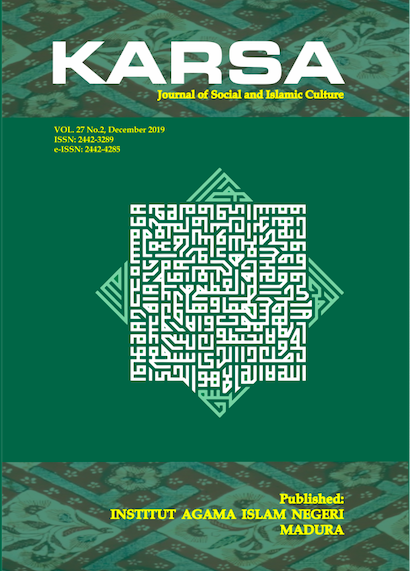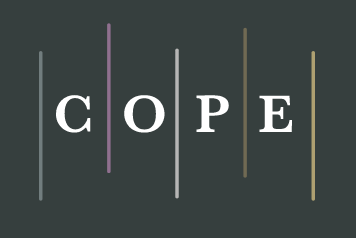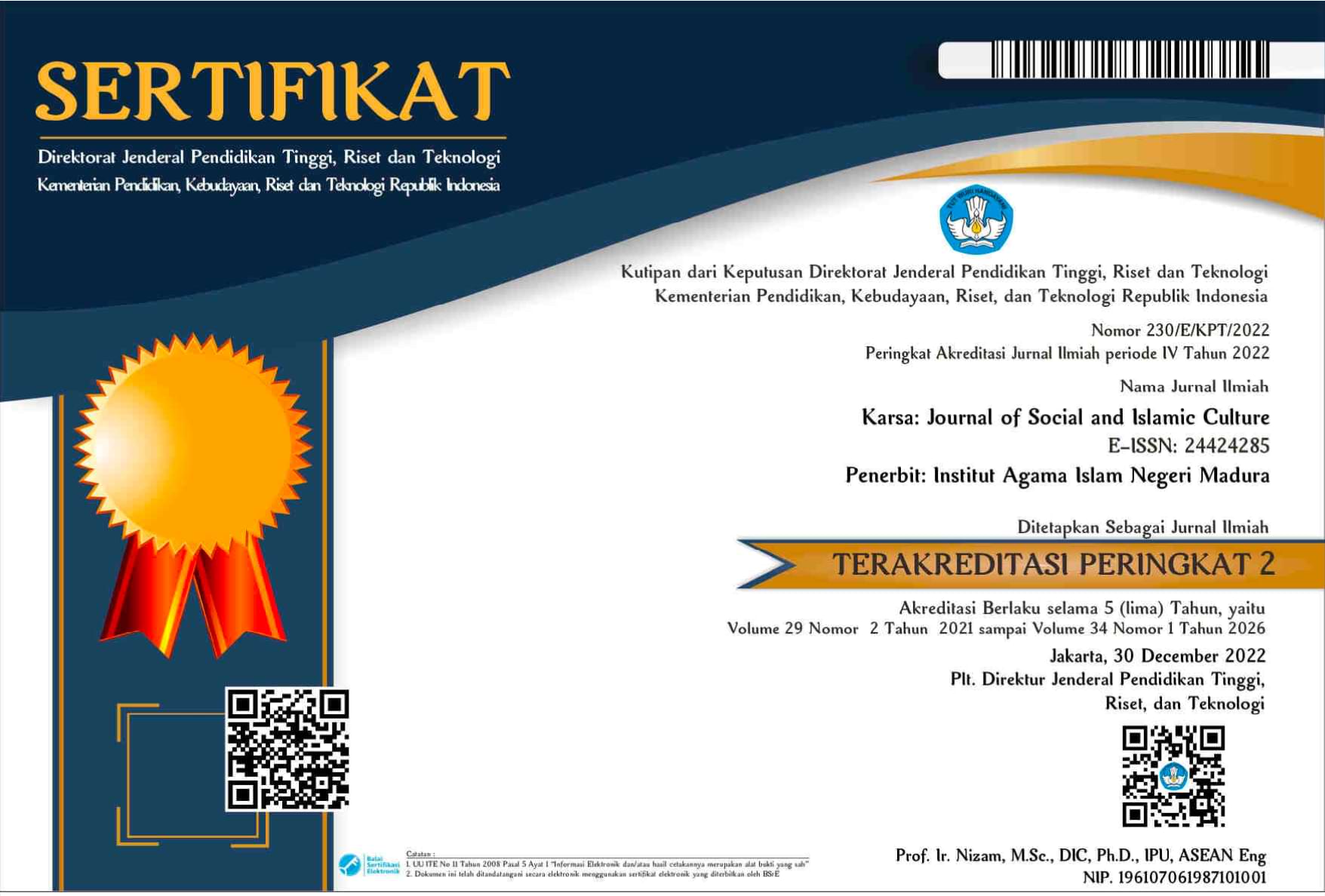Two Versions of Lah Bako Dance: Representing Agricultural Working Class and Identity Creation
 Abstract views: 471
,
Abstract views: 471
,
 PDF downloads: 412
PDF downloads: 412
Abstract
Downloads
References
Anoegrajekti, Novi. “Gandrung Banyuwangi: Pertarungan Pasar, Tradisi, Dan Agama Memperebutkan Representasi Identitas Using.” PhD dissertation, University of Indonesia, 2006.
Besley Timothy, and Persson Torsten. 2019. “The Rise of Identity Politics.” Working paper. Accessed July 20, 2019. http://www. lse.ac.uk/economics/Assets/Documents/personal-pages/tim-besley/working-papers/the-rise-of-identity-politics.pdf.
Hall, Stuart, ed. Representation: Cultural Representations and Signifying Practices. London: SAGE Publication Ltd., 1997.
Howarth, Caroline. “Representations, Identity, and Resistance in Communication.” In The Social Psychology of Communication, Edited by Derek Hook, Bradley Franks, and Martin W. Bauer. London: Palgrave Macmillan UK, 2011. doi:10.1057/97802 30297616_8.
Kuntowijoyo. Perubahan Sosial Dalam Masyarakat Agraris: Madura 1850-1940. Yogyakarta: Mata Bangsa, 2002.
Kussudiardjo, Bagong. Dari Klasik Hingga Kontemporer. Yogyakarta: Padepokan Press in association with Bentang Pustaka & Literary Agency, 1992.
Larasati, Rachmi Dyah. “The Dance That Makes You Vanish: Cultural Reconstruction in Post-Genocide Indonesia.” Journal of the Humanities and Social Sciences of Southeast Asia 169, no. 4 (2013). doi:10.1163/22134379-12340060.
Margana, Sri. Ujung Timur Jawa, 1763-1813: Perebutan Hegemoni Blambangan. Yogyakarta: Pustaka Ifada, 2012.
Nawiyanto. The Development of Plantation in Jember during the Late Colonial Period, 1859-1942. Yogyakarta: Lembah Manah, 2008.
Rifai, Mien Ahmad. Manusia Madura: Pembawaan, Perilaku, Etos Kerja, Penampilan, Dan Pandangan Hidupnya Seperti Dicitrakan Peribahasanya. Yogyakarta: Pilar Media, 2007.
Rochana, Totok. “Orang Madura: Suatu tinjauan Antropologis.” Humanus 11, no. 1 (2012): 46. doi:10.24036/jh.v11i1.622.
Rutherford, Jonathan. “The Third Space: Interview with Homi Bhabha.” In Identity: Community, Culture, Difference, 207–21. London: Lawrence & Wishart, 1998.
Savigliano, Marta. Tango And The Political Economy of Passion. Colorado: Westview Press, 1995.
Smith, Yda J. “Traditional Dance As A Vehicle For Identity Construction and Social Engagement After Forced Migration.” Societies 8, no.67 (2018): 1-10. doi:10.3390/soc8030067.
Trijono. Djember, 1859-1929: Melacak Sebuah Kota Berbasis Perkebunan Di Jawa Timur. Denpasar: Cakra Press, 2011.
Tsitsou, Lito. “Dance, Class and The Body: A Bourdieusian Examination of Training Trajectories Into Ballet and Contemporary Dance.” Scottish Journal of Performance 1, no.2 (2014): 63-89. doi: 10.14439/sjop.2014.0102.05.
The journal operates an Open Access policy under a Creative Commons Non-Commercial Share-Alike license. Authors who publish with this journal agree to the following terms:
- Authors retain copyright and grant the journal right of first publication with the work simultaneously licensed under a Creative Commons Attribution License that allows others to share the work with an acknowledgement of the work's authorship and initial publication in this journal.
- Authors are able to enter into separate, additional contractual arrangements for the non-exclusive distribution of the journal's published version of the work (e.g., post it to an institutional repository or publish it in a book), with an acknowledgement of its initial publication in this journal.
- Authors are permitted and encouraged to post their work online (e.g., in institutional repositories or on their website) prior to and during the submission process, as it can lead to productive exchanges, as well as earlier and greater citation of published work.





















